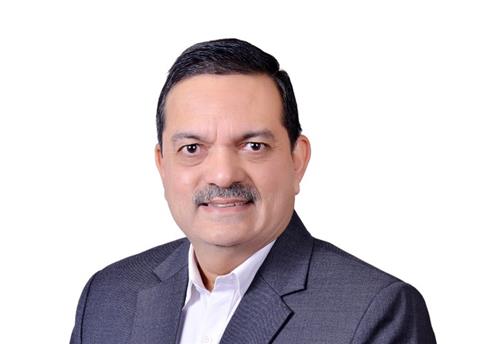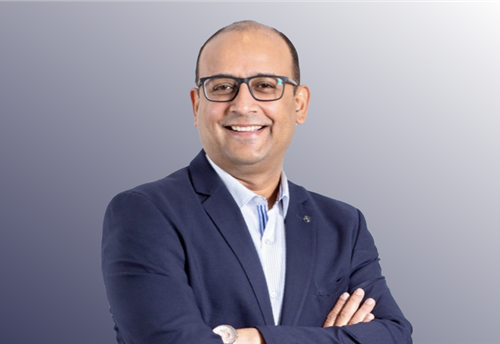Skilled manpower is the need of the hour
Everyone knows that pricing in China is more political and not cost-based. It is very hard to understand how they price their products, but suffice it to say that the prices are often lower than the material costs. It is not easy to sell into China from India, as apart from the foreign companies and JVs, Chinese companies basically buy Chinese components. Also the quality of their products is very varied and there are around 900 bearing companies.We would be giving access to one of the world’s largest growing automotive markets without gaining access there in return.
Now, whatever is going to come into India in terms of smuggled products, the only recourse there for any industry here is to impose an anti-dumping retaliation especially if it feels strongly enough about this. NRB is a company that is not as threatened because of the kind of products we are in. However, to protect many others, I do think a coherent anti-dumping move can be taken and should be initiated.
COMPETING WITH CHINA
China’s strength in manufacturing is one of scale and repletion. This applies to bearings, too. They can do very well on high volume duplication mass production and that applies to bearings as well. Indian bearing companies must focus their strengths more on engineering capabilities and value-addition. If we are able to do that in the long run, China will not be a threat.
I am also essentially against the current Chinese SEZ model for India. If you do a thorough study, you will find that in the 1970s when China had the highest growth rate, it was done in an environment which was very similar to India’s.
##### INFRASTRUCTURE DEBATE
Infrastructure is what people keep talking about in India. We often hear comments on how poor it is and why it should be addressed to promote growth. However, historically, it has been shown that China grew at a much faster pace when it had poorer infrastructure, as that forces you to be efficient and flexible, than the period when massive infrastructure and current SEZ policy was put in place.
It is a fact that if infrastructure follows growth, it will lead to higher levels of sustained development and that large scale centrally planned infrastructure projects funded by governments are not a good, efficient use of capital and tend to divert money away from the private sector to the government.
Further, if such projects include housing and commercial building projects they lead to money flowing into investments that are not beneficial to the masses. China has been able to do this at great cost to the poor and the farmers and its SEZ policy has been based on artificially low land cost (land grabbing) and as recent attempts show that is very hard to replicate this in a democracy.
When you put in that kind of money to create this base as is the case with China, it is only natural that the return on investment becomes quite poor. It certainly leads to strong macro-indicators and attracts foreign investment but what is a lesser known fact is that India outperforms China on all economic micro-indicators.
SPECIAL BENEFITS
The reason for this is that capital chases the big (not the better) projects and foreign companies that are welcomed into the SEZs get special benefits that Chinese companies find hard to compete with, this could be why so much of the FDI into China is from non-resident Chinese…it is not a level playing field so maybe they have to take money out and bring it back in through the SEZ route in order to compete.
In other words, if you are comparing country to country, China seems like a great place to enter on a macro level. But if you see how Chinese companies are performing in China vis-à-vis Indian companies in India, Indian companies and foreign investments into India have outperformed in terms of results, in spite of the poorer infrastructure and virtual lack of government support.
###### Considering the great headstart China has had over India, there are so few companies from China in a Fortune 500/1000 in comparison to the larger number of Indian companies. Also, there are so few global brands that are Chinese-owned. India’s advantage is that we have years of experience in brand building and we should leverage that too.
Indian companies are quite capable of succeeding on their own if they are given a level playing field ad SEZs will not do this. This is because fresh investments are needed to be able to compete. What we should be doing is to drive investment that has already been made.
In fact, the most successful state in China is one that has a structure that is very similar to India. It has much higher productivity and other improvements in the way they run. Talking about macro-competitiveness, China is number 46 and India is number 55. As for micro-competitiveness, India is no 30 while China is no 47. Hence, when we talk of individual companies trying to enter either country, they are going to be more successful in India.
All this applies to the auto component sector and to the bearing industry. We do not need the SEZ policy but what is required is a well planned focus on addressing the power issue and improving air, road and port infrastructure. What we should emulate is China’s focus on primary and secondary education and now on development of Basic Research Institutes.
Education is critical both as the best insurance for sustained growth and as the driver to wipe out poverty; because what is going to be the constraint in the future is availability of educated manpower, and our greatest risk is uneducated, dissatisfied youth that cannot share and be part of our the growth story.
YOUTHFUL INDIA
Nearly 25 percent of the world’s population under 25 is in India today. Twenty-three percent of the global workforce, by 2020, will be Indian. Demographics are greatly in our favour and that is where we score considerably against China and the rest of the world. Every country has an ageing population except India.
Having said that, India’s biggest challenge and what we should emulate is the Chinese focus on primary and secondary education and now on development of Basic Research Institutes. Education, and not SEZs or massive inefficient Chinese style infrastructure projects, are the need of the day. Creation of world-class infrastructure is inevitable and has already started happening but it is better done in a cost-effective way and not the Chinese way.
##### I do believe Indian companies have performed very well in spite of everything while Chinese-owned companies are not performing well enough despite everything they have. In my view, this is extremely significant.
Counterfeiting is a very big threat but things are much worse in China and this is another area where India scores over China. Fundamentally, in India, we are realizing the importance of intellectual property rights. We recognise brainpower and the fact that somebody’s idea has value. That is why we are so much better in management skills; and we do care deeply about things ‘lasting’ and that is anther way of saying we care about quality.
QUALITY OF MINDS
One of my favorite quotes is: “The future wars will be won by the quality of our minds and not just the quality of our products.” We have to make sure that Indian brainpower and manpower is adequate to fuel our future goals. Basic, relevant primary and secondary education is paramount and this is the most important issue; unfortunately there is very little thought being given to this issue, and when we do speak of education, it only speak of college education.
The success of Indian immigrants the world over has demonstrated the power of education to get ahead and Indians essentially care about education but the system is so poor that children just drop out of it altogether.All of Indian industry is talking about the attrition rate and shortage of management but the future will be bleak for manufacturing if we do not create a pipeline of future machine operators.
In industry, whether the company is within the organised or unorganised sector is less important than how well and efficiently it satisfies the customer. For instance, the unorganised sector exports more in many areas which means that they are obviously catering to a need. We are all open to competing with global players but then they should not be able to come with fresh investments into a brand new SEZ without extending the same benefits to Indian companies that have come up in spite of the constraints of the past.
It is not protection but a level playing field that must be ensured so there no anomalies are created in the future which will work against companies that have been part of the era of protection and poor infrastructure and have still survived and succeeded.
The Indian bearing industry is well poised to grow and to become world-class, and to supply to companies across the globe. Many multinationals have been in India for years and we are accustomed to competing with them, and more will join them. We must be prepared to compete with them in their home turf. We also need to have some critical mass because we are going to be competing with huge companies, so faster paced growth is critical for the long term survival of Indian companies. ...
RELATED ARTICLES
'ADAS' crux lies in its proactive approach to safety enhancement': TaMo's Mohan Savarkar
Savarkar writes about the role of Active Safety Technology and ADAS in Compact Cars in augmenting inclusive vehicle safe...
Maintenance 101 for your electric two-wheeler, a cheat sheet for a breezy ownership experience
The experience of owning electric bikes is new, and remaining informed, aware and proactive will help in becoming better...
How technology can advance traffic enforcement for safer roads
By ensuring that only qualified drivers occupy the roads, authorities can substantially reduce the risk of accidents ste...





 By Autocar Pro News Desk
By Autocar Pro News Desk
 28 Feb 2007
28 Feb 2007
 3814 Views
3814 Views









